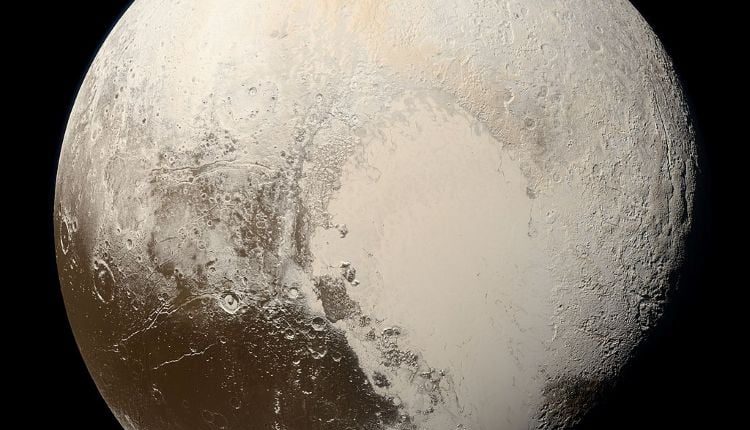What can cryovolcanism on Pluto teach scientists about the dwarf planet’s current geologic activity? This is what a recent study published in *The Planetary Science Journal* seeks to address as a team of researchers examined potential cryovolcanic sites in specific regions on Pluto. This study has the potential to help scientists better understand current geological activity, including how it can be active while so far from the Sun.
For the study, researchers examined the Kildaze Caldera on Pluto, located in the dwarf planet’s Hayabusa Terra region, for evidence of past cryovolcanic activity. To accomplish this, the team used a combination of images from NASA’s New Horizons spacecraft that flew by Pluto in July 2015 and compared them to other sites with cryovolcanism on Pluto, as well as to analogous sites on Earth and Mars. Cryovolcanic sites on Pluto include Virgil Fossae and Viking Terra, while analogous sites on Earth include Yellowstone Caldera, Valles Caldera, and Long Valley Caldera. For Mars, these sites include collapsed pit craters at Noctis Labyrinthus, a canyon-filled region in the western part of Valles Marineris, the largest canyon in the solar system.
Along with the New Horizons images and planetary analogs, researchers used a series of digital elevation models, elevation profiles and 3D visualizations to determine the origins of the water ice present in Kildaze. In the end, the researchers concluded that the water ice present on Kildaze is about a few million years old, or possibly older, but still much younger than the age of Pluto itself.
The study concludes: “Considering the size, structure, composition and youth of Kiladze and its surroundings, we suspect that this region is a caldera-structured cryovolcano that has had one or more eruptions in the past that ejected 103.” [1,000] km3 [cubic kilometers] of Kryolava and possibly an unknown number of smaller scale eruptions.”
As the name suggests, cryovolcanism involves icy “magma,” as opposed to hot lava or magma like traditional volcanism. Since the term “cryovolcano” was first used in 1987, cryovolcanism has been observed on countless worlds throughout the solar system, including Ceres, Europa, Ganymede, Enceladus, Titan, several uranium moons, Triton and Mars. Possible sources of cryovolcanism include external processes such as crater impacts, tidal heating caused by the contraction of two planetary bodies, or internal heat caused by radioactive decay.
What’s interesting about this study is that Pluto orbits furthest from the Sun than any other planetary body, meaning the Sun’s influence is unlikely to be responsible for its potential cryovolcanic activity. Scientists continue to debate whether the potential source of Pluto’s internal heating is tidal heating from interactions with its largest moon, Charon, or radiogenic heating, the radioactive decay of isotopes inside a planet. For example, a 2022 study published in Icarus hypothesized that Pluto’s internal heat was caused by tidal heating with its interactions with Charon, and that its size allowed this heat to remain inside long after Charon’s internal heat had cooled. Additionally, Pluto’s internal heat was thought to be due to its formation billions of years ago.
While New Horizons conducted its historic flyby in July 2015, it remains the only spacecraft to visit Pluto. Since then, several missions have been proposed to revisit Pluto, including an orbiter-lander combination powered by a fusion reactor that is believed to reach Pluto in just four years. For comparison, it took New Horizons nine years to reach Pluto. In the meantime, scientists continue to examine the data returned by New Horizons with the aim of unlocking the dwarf planet’s secrets regarding its geological activity.
What new insights into Pluto’s cryovolcanic activity will researchers gain in the coming years and decades? Only time will tell, and that’s why we do science!
As always, keep up the science and keep looking up!


Comments are closed, but trackbacks and pingbacks are open.